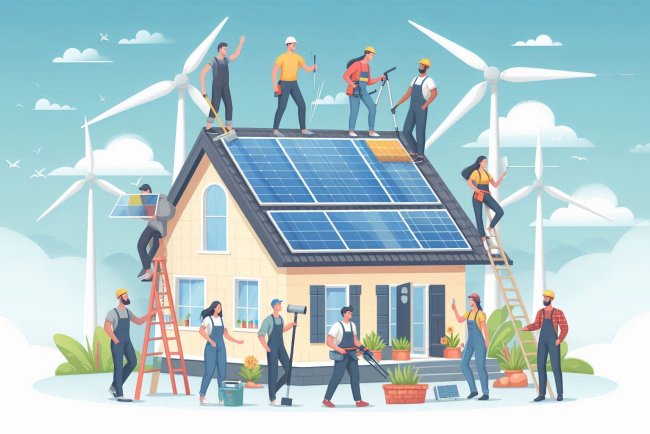Smart Grid Technologies and Renewables
Discover how smart grid technologies are revolutionizing the integration of renewables for a sustainable energy future. Learn more about the latest innovations.

Smart Grid Technologies and Renewables
In recent years, the integration of renewable energy sources into the power grid has gained significant momentum. Smart grid technologies play a crucial role in enabling the efficient and effective integration of renewables into the grid. This article explores the key smart grid technologies that are driving the transition towards a more sustainable and resilient energy system.
Renewables Integration
Renewable energy sources such as solar, wind, and hydropower are intermittent in nature, which poses challenges for grid operators in maintaining a reliable and stable power supply. Smart grid technologies help address these challenges by providing real-time monitoring, control, and optimization of the grid.
Advanced Metering Infrastructure (AMI)
AMI enables two-way communication between utilities and consumers, allowing for real-time monitoring of energy consumption and generation. This technology helps utilities manage the variability of renewable energy sources by adjusting demand in response to supply fluctuations.
Distributed Energy Resources (DERs)
DERs such as rooftop solar panels and energy storage systems are becoming increasingly popular among consumers. Smart grid technologies enable the seamless integration of DERs into the grid, allowing for more decentralized and resilient energy systems.
Grid Optimization
Grid optimization is essential for maximizing the efficiency and reliability of the power grid. Smart grid technologies play a key role in optimizing grid operations through advanced monitoring, control, and automation capabilities.
Smart Meters
Smart meters provide real-time data on energy consumption, allowing utilities to implement demand response programs and optimize grid performance. By analyzing consumption patterns, utilities can better manage peak demand and reduce overall energy costs.
Grid Automation
Grid automation technologies such as SCADA systems and smart sensors enable real-time monitoring and control of grid assets. These technologies help utilities detect and respond to grid disturbances quickly, improving system reliability and reducing downtime.
Energy Storage
Energy storage plays a critical role in enabling the integration of renewable energy sources into the grid. Smart grid technologies facilitate the deployment of energy storage systems, allowing for the efficient storage and utilization of excess renewable energy.
Battery Storage
Battery storage systems are increasingly being deployed to store excess energy generated from renewables such as solar and wind. Smart grid technologies enable the integration of battery storage systems into the grid, providing backup power during periods of low renewable generation.
Virtual Power Plants
Virtual power plants aggregate distributed energy resources such as solar panels, batteries, and electric vehicles to provide grid services. Smart grid technologies enable the coordination and optimization of virtual power plants, enhancing grid stability and flexibility.
Grid Resilience
Grid resilience is crucial for ensuring the reliability and security of the power grid, especially in the face of increasing extreme weather events and cybersecurity threats. Smart grid technologies enhance grid resilience through real-time monitoring, analysis, and response capabilities.
Microgrids
Microgrids are small-scale power systems that can operate independently or in conjunction with the main grid. Smart grid technologies enable the seamless integration of microgrids into the larger grid, providing backup power during outages and enhancing overall grid resilience.
Cybersecurity
Cybersecurity is a growing concern for grid operators as the power grid becomes increasingly interconnected and digitized. Smart grid technologies incorporate robust cybersecurity measures to protect against cyber threats and ensure the secure operation of the grid.
Conclusion
Smart grid technologies are driving the transformation of the power grid towards a more sustainable, efficient, and resilient energy system. By enabling the seamless integration of renewables, optimizing grid operations, facilitating energy storage, and enhancing grid resilience, smart grid technologies are shaping the future of the energy industry.
As the transition towards a cleaner and more sustainable energy system accelerates, the role of smart grid technologies will continue to expand, providing innovative solutions to the challenges of integrating renewables into the grid and ensuring a reliable and secure power supply for future generations.
What's Your Reaction?

















